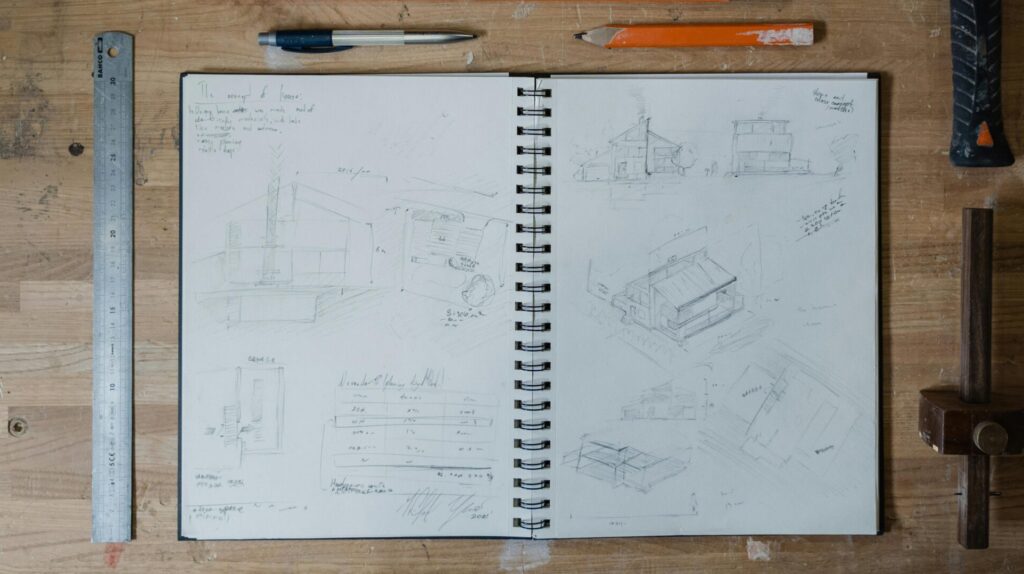Businesses that create aesthetic products know how designs are an essential part of their appeal to the market. With customers demanding innovation and creativity in design, it’s important to be able to protect your intellectual property (IP) when you create novel designs. Being aware of your rights can help protect against infringement and counterfeit items.
But can you protect your design work in the UK and the wider world without registration? Is there automatic protection, or is it worth the additional step to formally register your design rights?
This article explains how unregistered design rights differ from registered design rights, the dangers of relying solely on unregistered protection, and practical tips for ensuring that you have effective protection for your work.
Types of design rights in the UK
Design rights protect the visual impression of a product, such as its shape, configuration and ornamentation. There are two distinct rights for designs—registered design rights and unregistered design rights, which we have discussed previously. In this post we will focus on unregistered design rights. These are similar to copyright, unregistered design rights can come into force automatically.
What are the main features of unregistered design rights (UDR)?
UDR protects the shape and configuration of a design. As mentioned, this is:
- An automatic right which occurs once the design is recorded or manufactured.
- The duration of protection is either up to 15 years from creation or 10 years from when the product is first sold, whichever comes first.
It is important to mention there is another adjacent right called Supplementary Unregistered Design Rights (SUDR)—another automatic right which protects visual appearance, including both 2D and 3D features, covering shape, patterns, colours, and more. This lasts for 3 years from the first public disclosure of the design.
The limitations of “unregistered protection”
UDR can sound attractive and they exist to protect products with a short life span such as clothing and other fashion items or accessories. They can pose an unnecessary legal risk, particularly for businesses and designers seeking strong legal protection. Registering a design extends the protection to a much wider scope similar to SUDR.
Some Insights from Case Law
The Karen Millen v Dunnes Stores case (C-345/13) is a landmark decision by the Court of Justice of the European Union (CJEU) that clarified key aspects of unregistered design rights, particularly in the fashion industry.
Karen Millen Fashions, claimed that Dunnes Stores, an Irish retailer, had copied its striped shirt and black knit top, infringing its unregistered Community design rights. Dunnes admitted to copying but argued that the designs lacked “individual character” and that Karen Millen had not proven this.
The main issues were:
- whether the “individual character” of a design should be assessed against a combination of features from multiple earlier designs or against individual earlier designs.
- Whether the design owner must prove the design’s individual character to establish validity.
The CJEU ruled as follows:
- Individual character – The court ruled that a design’s individual character must be assessed based on the overall impression it produces compared to individual earlier designs, not a combination of features from multiple designs. This ensures a clear and fair comparison.
- Burden of proof – The CJEU held that the design owner does not need to prove individual character. Instead, they must indicate the elements of the design that give it individual character.
- Show that the design was disclosed to the public (e.g., through sale or display).
- Then the burden then shifts to the defendant to prove that the design lacks individual character.
Further, the following requirements were outlined in the judgement for UDR.
- Disclosure to the public – The design must have been made available to the public within the relevant jurisdiction for e.g., the EU for Community designs or the UK for UK UDRs. This can be through sales, exhibitions, or other public displays.
- Identification of features – The owner must clearly identify the features of the design that contribute to its individual character. This could include unique shapes, patterns, or configurations.
- Presumption of validity – Once the design is disclosed and its features are identified, it is presumed valid. The defendant must then challenge this presumption by providing evidence of prior art or lack of originality.
Issues related to UDR
- Limited Scope: Once again unregistered protections don’t include every aspect of your work, so potential imitators may only need to steer clear of your unique expression unless you are within the first 3 years of creation.
- Burden of proof: In case of infringement and as discussed above in the Karen Millen case, the burden of proof lies with the creator to establish ownership and originality, which is far more difficult without registration.
- Due to the lack of formal records, disputes surrounding unregistered rights can lead to complex litigation scenarios, which can be costly and time-consuming.
Actionable Strategies for Safeguarding Your Intellectual Property
To appropriately protect your creations, take these steps in addition to unregistered protections:
1. Keep Detailed Records
Document the development process for your designs or work. Sketches, drafts, timestamps, and similar documentation can provide essential proof in the case of a dispute.
2. Sign Licensing Agreements
If you plan to monetise your IP by licensing it to others, always prepare licensing agreements defining how, when, and for how long your IP may be used.
3. Consult IP Specialists
Professional legal guidance can assist in understanding the most effective methods to safeguard your intellectual property. IP law is complex, and a professional can help you avoid missing important details.
Get in touch with Freeman Harris for advice on designs
Figuring out when you can and cannot use someone else’s work in your projects can be tricky, especially when navigating designs in the UK. Similarly, another party may be using your designs, and we can advise you accordingly.
We at Freeman Harris are experts in UK intellectual property law, call or email us today.



